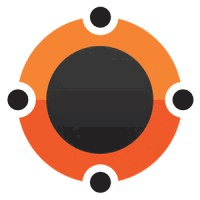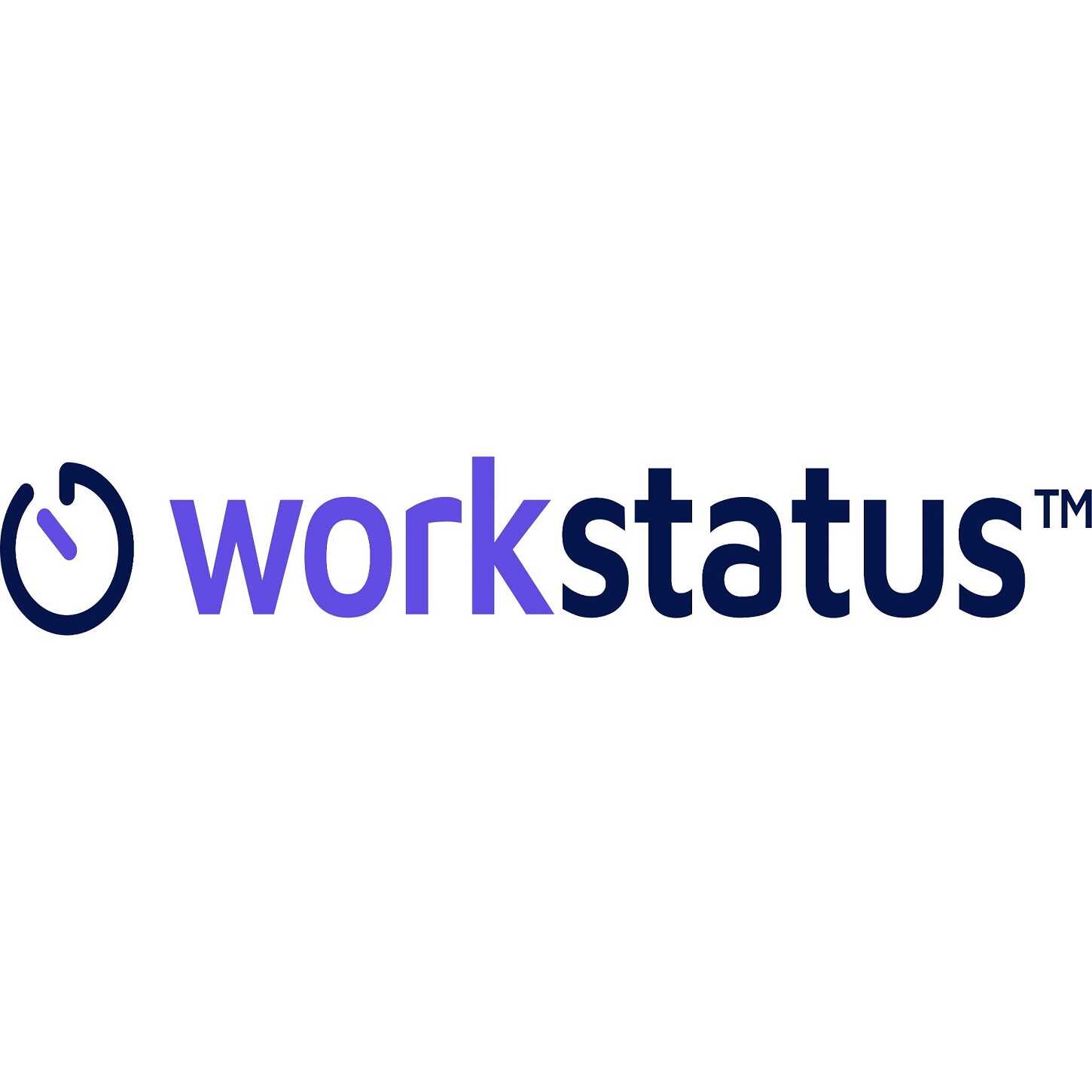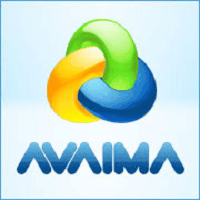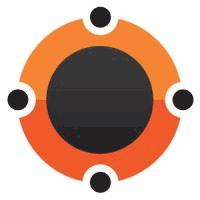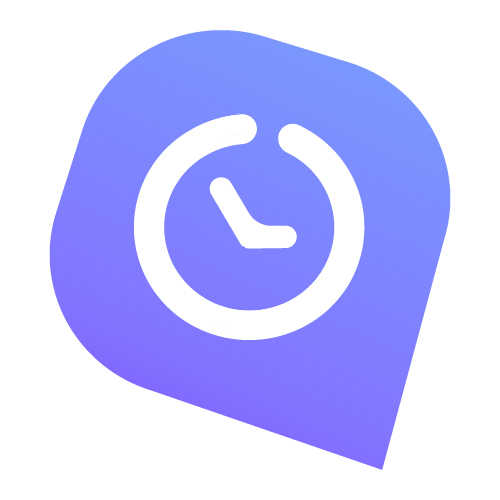What Is Employee Management System?
An essential software program called an Employee Management System (EMS) was created to automate and simplify the procedures and duties associated with overseeing a company's staff. It is an effective tool that aids businesses of all sizes in managing their workforces effectively, from onboarding to retirement. This all-inclusive system is designed to satisfy the unique requirements of many industries, making it a priceless resource for any company trying to improve its HR management procedures. The success of any business depends on efficient staff management, which an EMS facilitates by offering a consolidated platform for handling all employee-related data, including personal information, employment history, performance information, and perks.
By doing this, manual record-keeping is no longer necessary, thereby lowering the possibility of mistakes and saving important time and money. Because only authorized workers can access sensitive employee data, it also guarantees data confidentiality and accuracy. The ability of an EMS to automate several HR processes, including as time and attendance tracking, leave management, and performance reviews, is another important aspect.
This increases the accuracy and efficiency of these procedures while also making them simpler. In order to provide transparency and encourage self-service, employees can also use the system to view their information, request leave, and submit timesheets. A variety of analytics and reporting tools that offer insightful information about the workforce are also provided by an EMS.
These reports can be used to measure staff attrition, identify high-performing workers, and predict future labor requirements, among other decision-making processes. By optimizing HR tactics, this data-driven strategy might eventually improve overall business performance. The size of your business, the industry, and your particular needs all play a role in selecting the best EMS for your firm. Before choosing a solution, it is crucial to thoroughly assess your demands because some offer extra services like payroll management, personnel scheduling, and training and development modules.
What Are The Recent Trends In Employee Management System?
In recent years, there has been a significant shift towards digitalization and automation in the field of employee management. As a result, the traditional methods of managing employees have evolved into sophisticated and innovative employee management systems. These systems are designed to streamline operations, improve efficiency, and enhance employee engagement. In this guide, we will explore the latest trends in employee management systems, and how they can benefit your organization.
1. Cloud-Based Solutions: One of the most significant trends in employee management systems is the adoption of cloud-based solutions. This allows organizations to store all employee data and information in a centralized platform, accessible from anywhere at any time. Cloud-based systems also offer user-friendly interfaces, making it easier for employees to access and update their information.
2. Mobile Accessibility: With a growing number of employees working remotely, the need for mobile accessibility in employee management systems has become more critical than ever. Organizations are increasingly opting for mobile apps and responsive designs, allowing employees to access the system from their smartphones or tablets. This not only enhances convenience but also ensures that employees can stay connected and updated even when they are away from the office.
3. Data Analytics And Artificial Intelligence: Employee management systems are now equipped with advanced data analytics tools and AI-driven features. This enables organizations to gather valuable insights into employee performance, engagement, and overall satisfaction. With this data, organizations can make informed decisions and strategize for better employee management.
4. Integration With HR Tools: Another trend in employee management systems is the integration with HR tools and platforms. This allows for seamless data transfer and synchronization, eliminating the need for manual data entry and reducing the chances of errors. Moreover, integration with HR tools improves the overall efficiency of HR processes and streamlines tasks such as recruiting, onboarding, and performance management.
5. Focus On Employee Engagement: Employee engagement has become an integral part of the modern workplace, and employee management systems are no exception. These systems now offer features such as gamification, social recognition, and communication tools to keep employees engaged and motivated. This leads to improved job satisfaction, higher productivity, and reduced turnover rates.
Benefits Of Using Employee Management System
Businesses of all sizes are increasingly using employee management systems. These solutions provide a number of advantages that can simplify and enhance personnel management in general. To help you make an informed choice for your company, we will go over the main advantages of implementing an employee management system in this buyer's guide.
1. Employee Data Centralization: The fact that an employee management system offers a single location for all personnel data is one of its main benefits. This implies that all employee data, including personal information, work history, and performance reviews, may be conveniently accessed and handled in a single location. Data administration is considerably more effective with a centralized system since there is no need to look through numerous spreadsheets or sort through mountains of documentation.
2. Attendance And Time Monitoring: Employee time and attendance monitoring capabilities can also be included in an employee management system. Web-based solutions, smartphone apps, or biometric time clocks can all be used for this. Businesses may prevent time theft and guarantee fair and accurate employee compensation by keeping accurate records of employee hours.
3. A More Efficient Onboarding Procedure: The onboarding process for new personnel can be automated and streamlined with a strong employee management system. This entails automating the process of creating employee profiles and monitoring all required paperwork, including tax returns and employment contracts. Businesses may ensure a seamless transition for new hires and save time and money by implementing an effective onboarding strategy.
4. Better Interaction And Cooperation: Collaboration and effective communication are essential for a productive workplace. Employee Management Systems often offer features such as employee directories, messaging, and task management, making it easier for employees to communicate and collaborate on projects. A better working atmosphere and increased productivity may result from this.
5. Feedback And Performance Management: Performance management and feedback functions are included in a lot of employee management systems. This allows managers to set goals, track progress, and provide feedback to employees. These features can also be used to conduct performance evaluations, making the process more efficient and accurate.
6. Compliance And Data Security: Employee information is important and needs to be safeguarded. Employee Management Systems often have secure data storage and backup features, ensuring that sensitive information is kept safe and can be easily retrieved when needed. These systems can also assist with compliance requirements, such as storing employee records in accordance with state or federal regulations.
7. Economical: Using an Employee Management System can be a cost-effective solution for businesses. By streamlining processes and eliminating the need for manual data management, businesses can save on staffing costs and reduce the risk of errors.
Important Factors To Consider While Purchasing Employee Management System?
There are a number of crucial aspects to take into account before investing in a personnel management system for your company. Choosing the appropriate system is vital since it affects your company's overall production, efficiency, and success. When buying a personnel management system, bear the following points in mind:
1. Integration With Current Systems: It's critical to assess an employee management system's compatibility with your current systems, including payroll, time tracking, and HR software, before selecting one. Smooth operation and the removal of the need for further data entry are guaranteed by a seamless integration.
2. Features And Functionality: Determine what features and functionalities are crucial in an employee management system by evaluating the unique needs and requirements of your company. Attendance monitoring, task management, performance reviews, and employee self-service are a few essential elements to search for.
3. User-Friendliness: Your staff should be able to utilize the employee management system with ease and with little assistance. A user-friendly design and straightforward navigation will promote quicker adoption and guarantee optimal system utilization.
4. Scalability: Your team will expand along with your company. Selecting an employee management system that can grow with your business and meet your future requirements is crucial. By doing this, you will save the trouble of later having to convert to a different system.
5. Data Security: Since sensitive employee data is stored in an employee management system, data security is an important consideration. Make sure the system has strong security features including frequent backups, user access restriction, and data encryption.
6. Cost: Take into account the price of the staff management system's initial purchase as well as any recurring maintenance or subscription costs. To assess the system's worth to your company, you must compare its features and benefits to its cost.
7. Customer Service: Pick a supplier that provides dependable customer service, ideally around-the-clock. This will provide prompt support for any technical problems or inquiries and guarantee uninterrupted system operation.
8. Mobile Accessibility: Selecting an employee management system that is mobile-friendly is essential given the growth of remote work. This will guarantee productivity even when workers are not in the office by enabling them to access the system when they are on the go. You can make an informed choice and select the best personnel management system for your company's requirements by taking these aspects into account when making your purchase. Involving your staff in the decision-making process is also essential in order to comprehend their problems and choose a system that meets their requirements. Your company will benefit much from your staff management system if you choose the right choice.
What Are The Key Features To Look For In Employee Management System?
Important Qualities to Consider in an Employee Management System:
1. Personnel Database And Tracking: A trustworthy personnel management system should have an extensive employee database that makes it simple to monitor and manage the data of your staff, including attendance, performance reviews, and personal information.
2. Time And Attendance Management: To effectively manage shifts, measure absenteeism, and accurately record employee work hours, an effective employee management system should have time and attendance tracking features.
3. Payroll Management: To precisely determine employee wages, taxes, and deductions, look for a system that can work in unison with your payroll procedure. This will cut down on errors and save you time.
4. Performance Review And Feedback: To help you identify top performers and make plans for employee development, an effective employee management system should facilitate performance review and provide options for providing feedback to staff members.
5. Project And Task Management: Seek out a system that lets you assign projects and tasks to staff members and monitor their progress. This will assist you in setting priorities, managing workloads, and guaranteeing that tasks are completed on time.
6. Communication And Collaboration: To promote efficient communication and cooperation between teams and employees, an employee management system should have facilities for document sharing, video conferencing, and chat.
7. Training And Onboarding: To assist new hires in becoming acquainted with corporate policies and procedures and completing required training, a strong employee management system should have onboarding and training features.
8. Reporting And Analytics: Verify that the employee management system includes reporting and analytics capabilities so you can create personalized reports and learn more about attendance, performance, and other important indicators.
9. Compliance And Security: To safeguard sensitive employee data, look for a system that complies with compliance laws and provides strong security features.
10. Cost-effective And Scalable: Take into account a staff management system that is both affordable and easily expandable as your company expands, all without sacrificing usefulness. To sum up, features like employee database and tracking, payroll, time and attendance management, performance evaluation, task and project management, communication and collaboration, onboarding and training, reporting and analytics, compliance, security, and scalability should be given top priority when searching for an employee management system.
Why Do Businesses Need Employee Management System?
Businesses need employee management systems to efficiently manage their workforce and streamline their operations. These systems provide a centralized platform for all employee-related processes, including attendance, scheduling, performance evaluations, and payroll. Let's explore the key reasons why investing in an employee management system is crucial for businesses.
1. Streamline HR Processes: Employee management systems automate time-consuming HR tasks such as tracking attendance and managing leave requests. This not only saves time for HR personnel but also reduces the chances of human error. With an employee management system, businesses can streamline their HR processes, making them more efficient and accurate.
2. Enhance Employee Productivity: An employee management system provides real-time tracking of work hours, tasks, and projects. This helps businesses identify top-performing employees and those who need improvement. With regular performance evaluations and feedback, employees can be motivated to increase their productivity and contribute to the company's growth.
3. Ensure Compliance With Laws And Regulations: Employee management systems help businesses stay compliant with labor laws and company policies. These systems come with features like automatic overtime calculations and break-time tracking, ensuring that businesses adhere to labor regulations. This reduces the risk of penalties and legal issues for the company.
4. Improve Communication And Collaboration: Effective communication is crucial for any business's success, and an employee management system can help achieve that. These systems include features like instant messaging, task assignment, and collaboration tools, promoting better communication and teamwork among employees.
5. Centralize Employee Data And Records: An employee management system acts as a centralized database for all employee-related information. This makes it easier for businesses to access and manage employee data, such as personal and contact information, work history, and performance evaluations. Centralization also ensures data security and confidentiality.
How Much Time Is Required to Implement Employee Management System?
Implementing an Employee Management System (EMS) takes different amounts of time, based on your organization's unique requirements. Nonetheless, the normal timeframe for putting an EMS into place is between three and six months. Finding the precise features and functionalities your company needs is the first step in putting an EMS into place.
To identify the main issues with your present personnel management procedure and the intended results of putting an EMS in place, you may need to perform a requirements assessment. The next step after determining the requirements is to choose an EMS provider who can fulfill the goals and needs of your company. Depending on how many companies you analyze and how complicated their systems are, this process could take two to four weeks.
Configuring and tailoring the system to your organization's particular workflow and procedures comes next after choosing the EMS provider. Depending on how complex your company is and how much customization is needed, this typically takes 4–8 weeks. To make sure that all features and functionalities are operating as intended, extensive testing must be done after the EMS has been fully configured. This testing stage usually takes two to four weeks, depending on how big and complicated your company is.
The EMS can then be launched and deployed throughout your company once all required testing and customizations have been finished. Depending on the length of the training program and how quickly your staff can become used to the new system, this procedure could take two weeks to a month.
What Is The Level Of Customization Available In Employee Management System?
Because they automate and streamline a variety of HR procedures, including payroll management, performance evaluation, and attendance monitoring, employee management systems, or EMS, have become indispensable tools for companies of all sizes. The degree of customization that EMS provides is a crucial feature that distinguishes them from conventional HR solutions.
EMS platforms are aware that every company has different demands and specifications when it comes to personnel management. As a result, they offer a variety of customizing choices to meet these various demands. Although an EMS's degree of customization might vary, the majority of software suppliers provide an adaptable and user-friendly interface that allows users to customize the system to meet the unique requirements of their organizations.
The ability to add or remove modules is one common level of customization offered by EMS. Companies can choose the modules they need and omit those that aren't necessary for their operations. This guarantees that the system only has the tools that are necessary for the operation of the company and is free of extraneous features.
The settings and permissions for various user roles are another area of an EMS that can be altered. This guarantees data security and privacy by enabling enterprises to manage access to sensitive data and features. In accordance with their hierarchy and job duties, businesses can also design unique user roles and allocate access levels. Additionally, EMS platforms provide configurable forms for gathering employee data, including emergency contacts, employment history, and personal information.
Businesses who need to adhere to particular industry rules or have unusual data collection needs will find this option extremely helpful. Additionally, companies can customize an EMS's analytics and reporting features to monitor the KPIs that are important to them. This facilitates data-driven decision-making for personnel management by giving managers and HR teams actionable insights.
Which Industries Can Benefit The Most From Employee Management System?
For companies of all sizes and in a variety of industries, employee management systems—also referred to as employee management software are becoming more and more crucial. An employee management system's primary goal is to centralize and automate a number of HR procedures, including payroll, performance management, time and attendance tracking, and employee onboarding. An employee management system may help practically every industry, but some sectors stand to gain the most from this effective instrument. We'll look at which sectors stand to gain the most from putting in place an employee management system below:
1. Small And Medium-sized Businesses (SMBs): SMBs typically have a smaller HR staff and fewer resources. For these companies, an employee management system can assist save time and streamline procedures. An Employee Management System can improve the efficiency and cost-effectiveness of HR operations for SMBs by automating repetitive procedures and offering real-time insights and analytics.
2. Manufacturing: The manufacturing sector is renowned for its intricate employment regulations and practices, including labor diversity, overtime pay, and shift scheduling. In addition to monitoring hours worked and managing employee schedules and shifts in real-time, an employee management system may guarantee adherence to labor rules and regulations.
3. Healthcare: Physicians, nurses, administrative personnel, and support personnel are among the many and varied workers in the healthcare sector. It might be quite difficult to manually manage such a diversified staff. Healthcare facilities' HR departments may more effectively handle staff schedules, leave requests, and medical certificates with the use of an employee management system.
4. Retail: An employee management system has several advantages for retail companies. An employee management system can help increase staff retention, expedite the hiring process, and offer scheduling and time tracking solutions tailored to the requirements of the retail sector, which has high employee turnover rates and high customer service demands.
5. Professional Services: Many workers in the professional services sector, which includes accounting, legal, and consulting businesses, work on projects for various clients. To guarantee on-time project completion and client satisfaction, these companies can measure billable hours, manage project assignments, and keep an eye on employee performance with a personnel management system.
Conclusion
To sum up, an Employee administration System (EMS) is a crucial instrument that may significantly enhance the administration of human resources in any company. An EMS offers a variety of capabilities that can improve a business's bottom line, from increasing productivity and streamlining procedures to enhancing staff engagement and retention.
It's crucial to do extensive research and weigh your options when thinking about buying an EMS in order to determine which one best suits the unique requirements of your company. The system's ease of use, customization possibilities, security features, and customer service are all important considerations. Additionally, consider the EMS's scalability and your budget.
A system that can adapt to your company's future growth and changes is what you want to invest in. To obtain important insights and make sure the EMS satisfies all standards, it is also advised to include important stakeholders in the decision-making process, such as department heads and HR managers.
All things considered, by centralizing and simplifying staff data, enhancing teamwork and communication, and promoting improved decision-making, an EMS can significantly help a company. Your company's total productivity and employee satisfaction can be greatly increased by selecting the best EMS and putting it into practice.






